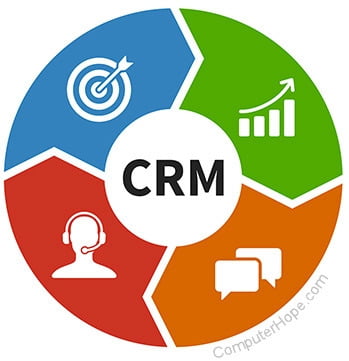
"CRM may have reached maturity, but according to this author, the business-to-business market is very fertile territory. But before CRM managers jump in, they should take a few steps back and learn some valuable lessons from business-to-consumer marketers. Here’s a helpful, easy-to-follow blueprint for the B2B manager."
Efficiency, Productivity and More
Efficiency, Productivity and More
A few large business-to-consumer (B2C) organizations with millions of direct customers have generated some of the best returns from customer relationship strategies. By focusing on customers’ needs rather than those of the organization, these organizations enjoy significant boosts in revenues, enabling them to also enjoy healthy paybacks on their investment in Customer Relationship Management.
Business-to-business (B2B) organizations typically have fewer customers (often intermediaries rather than end consumers) and smaller product ranges. Nevertheless, B2C CRM principles can be successfully applied in a B2B environment, with the same, satisfying return on investment. This article will explain how these important principles can be applied.
A very brief history of CRM
The golden age for CRM was actually more than 50 years ago. Canada was then a small-town country, with businesses localized in small communities. Business leaders knew the intimate details of their fellow citizens’ lives – births, marriages, deaths and other life cycle changes — giving them a near-real time view of their customers’ changing needs. In those days, there was little need for expensive CRM technology.
Movement to big cities changed all that. Urban and suburban living in the second half of the 20th century coincided with development of many new and desirable consumer products to sell, and powerful new technologies to process huge transaction volumes and drive down transaction costs. With a combination of product-oriented, demand-push and transaction focus, it is hardly surprising that many organizations lost sight of the fact that their customers were individuals.
In the late1990s, companies tried to re-personalize their customer relationships by installing sales technology-sales contact management, Web personalization of e-sales messages, and sophisticated segmenting and predictive modeling tools for more tailored sales messages. All too often the result was an increase in one-way product “communications” fired at customers. It was a frenzy of sales missiles lobbed at any prospect coming within range, and driven by the need to sell more rather than the customers’ own intrinsic needs.
These sales tools have improved results, although the outcomes have often been modest and unsustainable. Gains in satisfaction, cross selling, and retention are reported from most incremental activity aimed at the customer. It seems that customers are used to the traditional “one size fits all” approach and appreciate additional attention.
However, customer resistance is setting in. For example, in the Canadian retail banking industry, relationship marketers are reporting declining responses to their targeted sales campaigns despite using sophisticated segmentation and modeling techniques.
The breakthrough in customer understanding
A few large-scale Business-to-Consumer (B2C) firms – some banks, airlines, retailers, hospitality providers, and telcos – have succeeded in taking CRM to a higher level. What have they done differently?
They practice relationship strategies that are based on the needs of the individual customer, rather than their own internal goals. They still use sales tools and still send out targeted product messages to various customer segments. However, they also search out a relatively few customers every day for whom actual relationship history and transaction behavior indicate that the time may be right to find out what may have changed in their customers’ lives.
These companies make it an act of faith to recognize customers’ needs rather than their own. They prefer to react to actual customer behavior rather than just make assumptions about customer needs from sampling and modeling. They like to find out customers’ needs through dialogue with them rather than from predictive models. They are very selective in which customers they talk to, recognizing that they can’t talk to all of their customers every day. They build their strategies through business rules set by business people, using technology as the enabler rather than the driver. They use reporting to facilitate individual customer decisions, rather than just reporting on trends. So strong is the commitment to satisfying their customers’ requirements that daily customer dialogue has become an integral part of their brand values.

